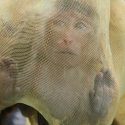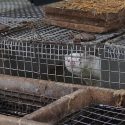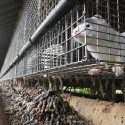Action for primates and One Voice fly to the aid of monkeys transported by AirBridgeCargo. Write to the airline with us!
Archives: News
1000 mink slaughtered at the Eure-et-Loir fur farm because of cases of Covid-19
The 1000 mink at the Eure-et-Loir fur farm have been slaughtered because cases of Covid-19 were detected there. We call for the immediate closure of the four French fur farms.
No more persecuting animals during lockdown!
Numerous prefectoral decrees have been published authorising hunting during lockdown. One Voice is challenging around twenty of them.
Airline cuts ties with cruel primate trade
After our joint campaign with Action for Primates and Animal Rights Florida Foundation (ARFF), Skybus Jet Cargo, chose not to get involved in the cruel primate trade.
One Voice v. mink farm in Montarlot: victory!
The decree issued by the Prefect of Haute-Saône in December 2017 authorising the breeder to increase the capacity of his fur farm from 2000 to 7700 animals has been set aside.
Covid-19 on mink farms: an absolute massacre
All the animals on mink farms in Denmark are to be killed, this time not in the name of fashion but of public health. Stop this deadly industry!
Victory! Badgers in Jura will be not killed in Spring nor next Summer!
The provision prolonging the badger-hunting season in the department of Jura as from May 2021 has just been removed from the prefectoral decree as a result of our petition!
No to an exception for hunting during the second lockdown
Hunters have been given the right to hunt during the second lockdown. We are writing to the Ministry of Ecology to challenge this decision.
First world kangaroo day calls for national australian moratorium on the commercial killing of kangaroos Saturday 24 october 2020
One Voice supports the first world kangaroo day and calls for the protection of kangaroos from commercial hunting (meat and fur).
Baby out of the wagon but still being exploited
Baby the elephant has been released from her wagon but continues to entertain the public. Being elderly and infirm, it is retirement in a proper refuge that she needs.









